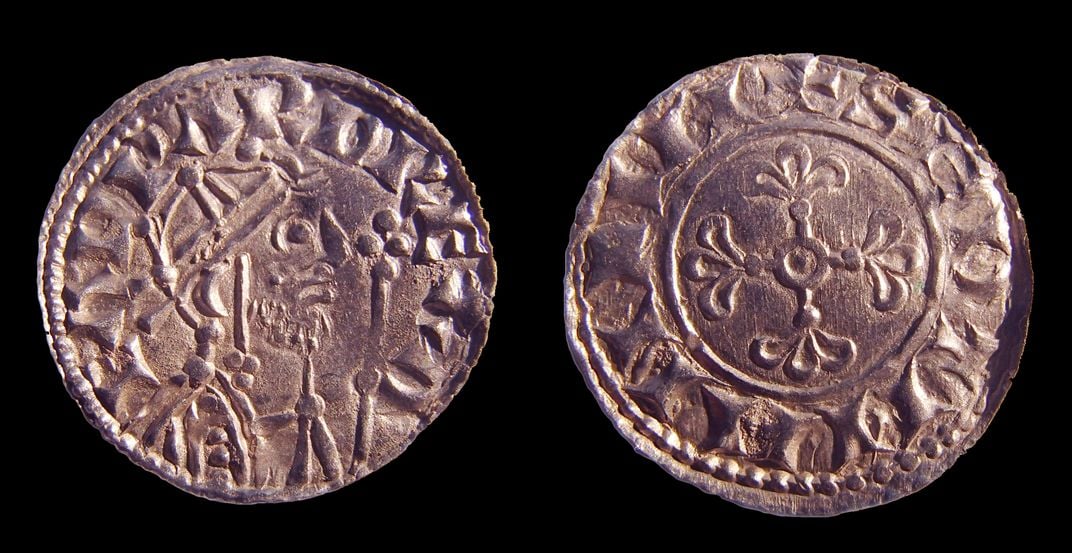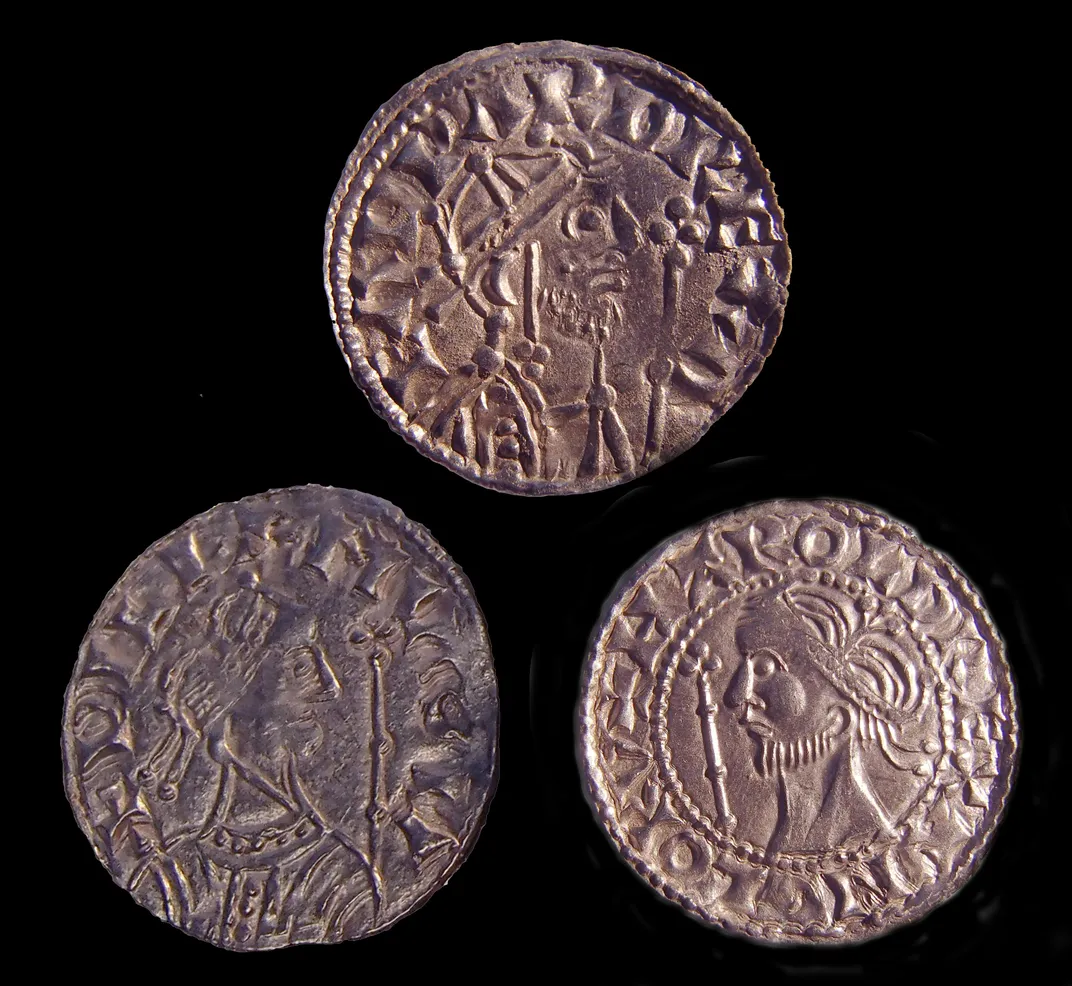Medieval Coin Hoard Offers Evidence of Early Tax Evasion
Metal detector enthusiasts in England unearthed a trove of 2,528 coins while searching in Somerset
/https://tf-cmsv2-smithsonianmag-media.s3.amazonaws.com/filer/25/8f/258f3655-600a-4c1d-9254-a65621be1541/chew_valley_hoard_-_heap_b.jpg)
Shortly after the Battle of Hastings in 1066, a wealthy local buried a trove of 2,528 coins in what is now Somerset, England. Featuring the likenesses of both Harold II—the country’s last crowned Anglo-Saxon king—and his successor, William the Conqueror, the hoard is the largest collection of post-Norman Conquest coins found to date. But that’s not all: As the British Museum reports, the medieval money also represents an early example of the seemingly modern practice of tax evasion.
According to a press release from the museum, three of the silver pieces are “mules,” or illegally crafted coins boasting designs from mismatched dies on either side. Two boast Harold’s image on one side and William’s on the other, while the third depicts William and Harold’s predecessor, Edward the Confessor. By re-using an outdated die, the moneyer who made the coins avoided paying taxes on new dies. Per the Guardian’s Mark Brown, the two-faced coin would have been easy to present as legal currency, as most Anglo-Saxons were illiterate and unable to distinguish between the relatively generic royal portraits.
“One of the big debates amongst historians is the extent to which there was continuity or change, both in the years immediately after the Conquest and across a longer period,” Gareth Williams, the British Museum's curator of early medieval coinage, says in the statement. “Surviving historical sources tend to focus on the top level of society, and the coins are also symbols of authority and power. At the same time, they were used on a regular basis by both rich and poor, so the coins help us understand how changes under Norman rule impacted on society as a whole.”

Adam Staples, one of the metal detector enthusiasts who helped unearth the trove, tells Brown that he and partner Lisa Grace were teaching friends how to use the treasure-hunting tool when one member of their party happened upon a silver William coin. Staples calls it “an amazing find in its own right.” But then, there was another signal pointing to another coin. Suddenly, he says, “there were beeps everywhere, [and] it took four or five hours to dig them all up.”
The Telegraph’s Hannah Furness writes that the total value of the find could be upward of £5 million (just over $6 million). However, considering the coins’ condition and potential flooding of the market if the hoard is offered for sale, that value may be overinflated.
For now, the hoard is under the care of the British Museum, which will determine whether it falls under the legal category of “treasure.” (Under the Treasure Act of 1996, individuals in England, Wales and Northern Ireland are required to report finds to their local coroner, who then initiates an investigation.) If the pieces are classified as treasure, the Roman Baths and Pump Room, fittingly located in Bath, has expressed interest in acquiring them.

According to the British Museum, the collection contains 1,236 coins bearing Harold’s likeness, 1,310 coins testifying to William’s takeover and various silver fragments. In total, the newly discovered Harold coins outnumber the collective amount known to exist previously by almost double. The William coins, meanwhile, represent more than five times the number of previously recovered pieces issued by the Norman king following his coronation in 1066.
Writing for the Conversation, Tom Licence of England’s University of East Anglia explains that the hoard—sizable enough to pay for an entire army or, alternatively, around 500 sheep—was likely hidden by a member of the nobility hoping to protect his wealth amid a volatile political environment. (Harold ascended to the throne after the death of his childless brother-in-law, Edward the Confessor, but William of Normandy, later William the Conqueror, disputed the king’s claim and soon seized power.)
It remains unclear which of these regimes the aristocrat in question supported, but as Gareth Williams, the British Museum’s curator of early medieval coinage, points out in an interview with the Guardian’s Brown, the key detail is that the person was burying the hoard during a period of instability. He adds, “It is the sort of circumstances in which anyone might choose to bury their money.”
/https://tf-cmsv2-smithsonianmag-media.s3.amazonaws.com/accounts/headshot/mellon.png)
/https://tf-cmsv2-smithsonianmag-media.s3.amazonaws.com/accounts/headshot/mellon.png)